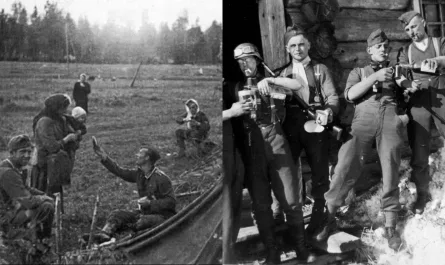Perched majestically on a volcanic basalt outcrop along the Northumberland coast, Bamburgh Castle has stood as a sentinel over the North Sea for centuries. An 1833 engraving of this iconic fortress, captured in intricate detail, reveals how its silhouette has evolved over the past 192 years, while its core structure—dating to the 12th century—remains a testament to medieval engineering and enduring legacy.

A Castle Rooted in History
Bamburgh Castle’s origins stretch back to at least the Anglo-Saxon period, but the fortress as we know it took shape in the 12th century under Norman influence. Built on a rugged, 45-meter-high outcrop, its strategic position made it a key stronghold in northern England, guarding against invasions and commanding views across the Northumbrian coast. By 1833, when the engraving was created, the castle had weathered centuries of conflict, including Viking raids, medieval sieges, and the Wars of the Roses, yet retained its imposing presence.
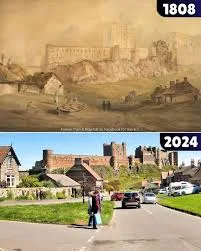
The 1833 engraving, likely from a period sketch or painting, depicts Bamburgh as a romantic ruin, with its massive keep, battlements, and towers rising starkly against the sea. At the time, the castle was in a state of partial disrepair, having been neglected after its role as a defensive fortress waned. The artwork captures its rugged grandeur, with crumbling walls and a weathered facade, evoking the Romantic era’s fascination with gothic ruins.
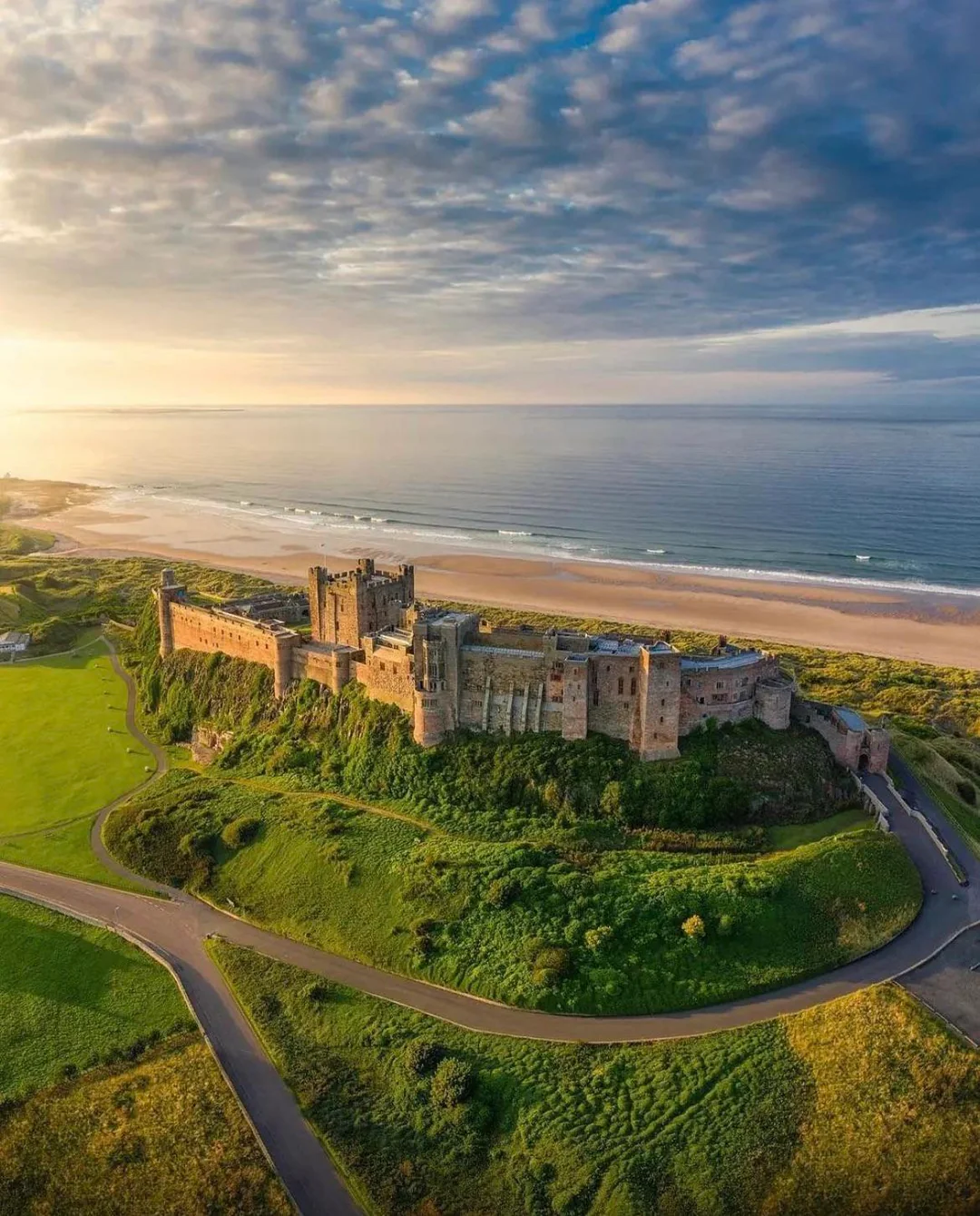
Transformation Over Two Centuries
Since 1833, Bamburgh Castle has undergone significant restoration, transforming it from a dilapidated stronghold into a vibrant family home and tourist attraction. In the late 19th century, the castle was purchased by industrialist William Armstrong in 1894, whose family still owns it today. Armstrong, a visionary engineer, invested heavily in restoring the castle, rebuilding towers, reinforcing walls, and modernizing interiors while preserving its medieval character.
Comparing the 1833 engraving to modern views, the changes are striking. The once-crumbling battlements are now meticulously restored, with sharper, more defined stonework. Towers that appeared jagged in the engraving stand tall and intact, and additions like Victorian-era windows and roofing subtly blend with the Norman core. The keep, a central feature in 1833, remains dominant, but surrounding structures, such as the outer walls and gatehouse, have been rebuilt to reflect their medieval origins. The castle’s footprint, sprawling over nine acres, is better defined today, with manicured grounds replacing the wild, unkempt landscape of the engraving.
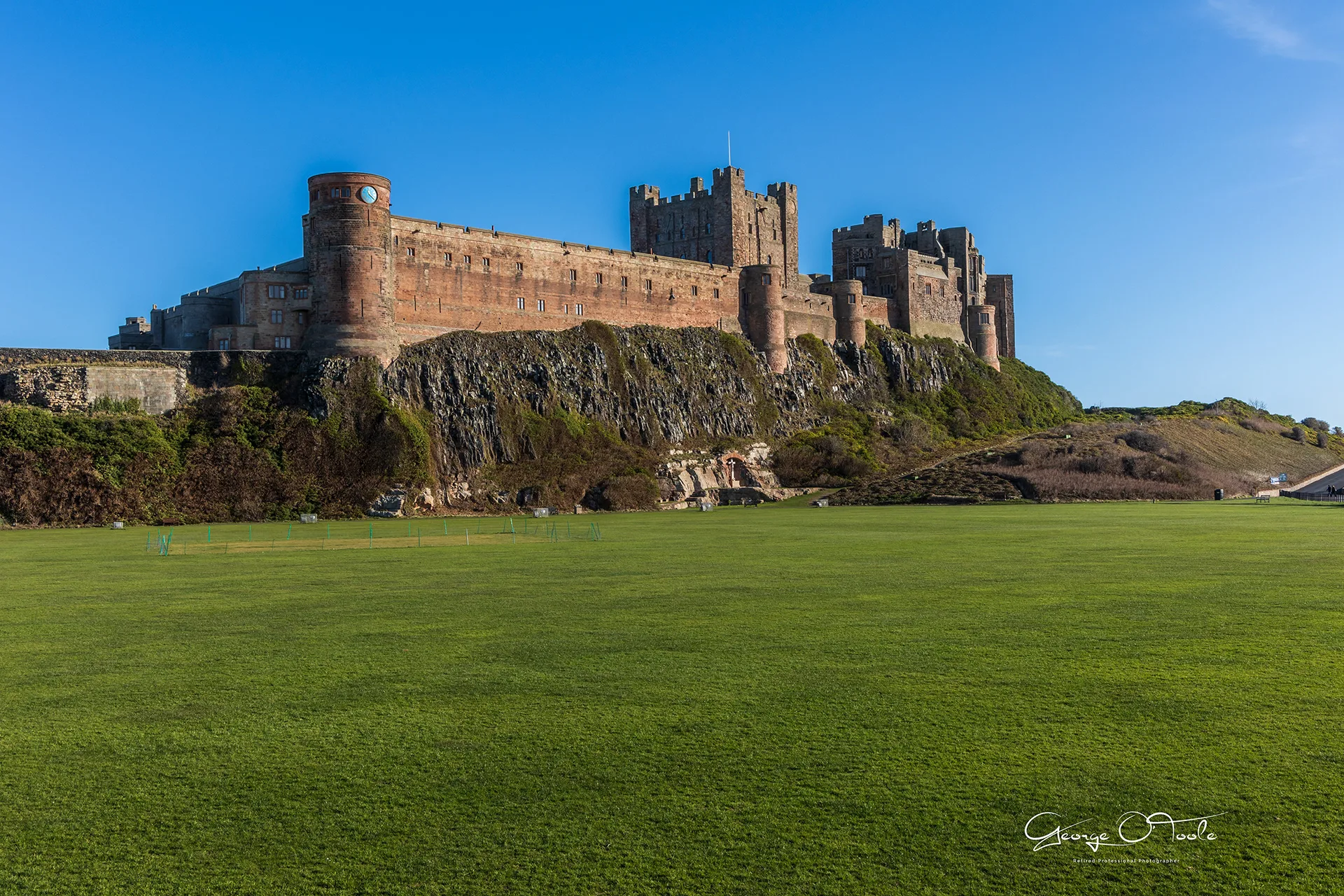
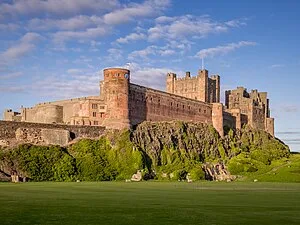
A Living Legacy
Despite these changes, Bamburgh’s essence endures. The volcanic outcrop, a constant in both the 1833 engraving and today’s skyline, anchors the castle’s silhouette, its dark basalt contrasting with the North Sea’s waves. The fortress’s medieval heart—its 12th-century keep and curtain walls—still evokes the power of its Norman builders, who capitalized on the site’s natural defenses. The engraving’s romanticized decay has given way to a revitalized castle, now a museum, event space, and filming location for works like The Last Kingdom and Macbeth.
Bamburgh’s evolution reflects its adaptability. From a royal stronghold to a charitable institution in the 18th century, and now a cultural landmark, it has weathered time as steadfastly as the rock it stands on. The 1833 engraving captures a moment of transition, while today’s restored castle bridges past and present, inviting visitors to explore its storied halls.

A Window Through Time
The 1833 engraving of Bamburgh Castle is more than a historical snapshot—it’s a reminder of the fortress’s resilience. From its 12th-century origins to its modern restoration, Bamburgh has transformed while retaining its awe-inspiring presence. The volcanic outcrop, the crashing North Sea, and the castle’s towering silhouette connect the past to the present, making Bamburgh a timeless icon of Northumberland’s rugged beauty.






